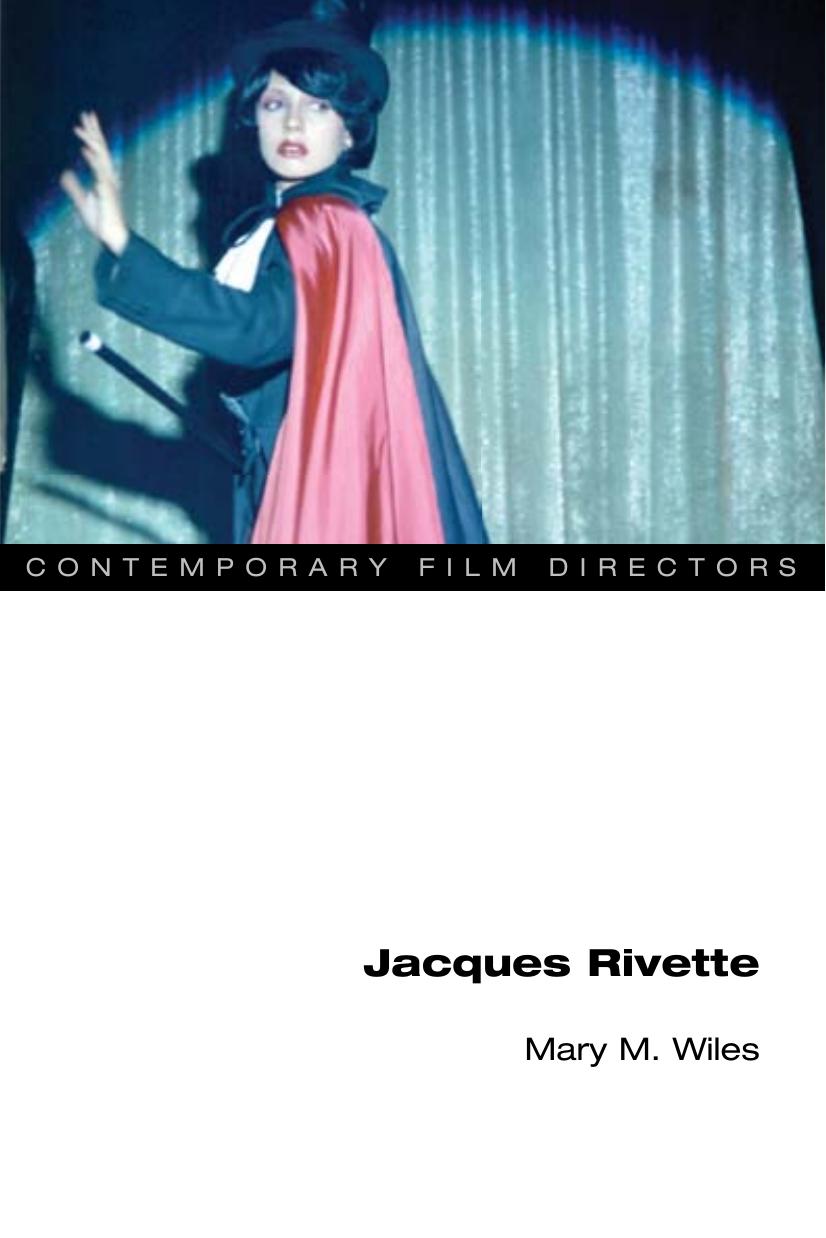Jacques Rivette by Mary M. Wiles

Author:Mary M. Wiles
Language: eng
Format: epub, pdf
Publisher: University of Illinois Press
Published: 2012-03-14T16:00:00+00:00
Figure 8. Ninon and louiseâs liberating dance number in Haut bas fragile.
This continual oscillation between meaning and motion in the film recalls Idaâs search for the source of a song she thinks she hears, or overheard before she was born, and the anxiety of the girl-childâs search for the first lost object, the Mother (or her synechdochic stand-inâher maternal voice). Like the rocking movement of objects and characters, Idaâs incessant search throughout the film for a missing musical refrain literalizes aurally (and narratively) the backward and forward movement of the fort/da game, a childâs game of repetition designed to diminish the unpleasure caused by the absence of the mother. This imaginary game, in which the child repeatedly pulls a toy reel back and forth, marks the childâs initial attempt to master the drives through entry into language. This game of repetition, premised on the alternation of lack and plentitude, is set into motion in the filmâs unfolding. In his reformulation of Lacanian theory, Guy Rosolato has characterized the maternal voice as a âlost object,â which comes to represent what alone can make good the subjectâs lack (qtd. in Silverman 85). Rosolato observes that the primordial listening experience is the prototype for the pleasure that derives from music, affirming that it is âthe whole drama of separated bodies and their reunion, which supports harmonyâ (qtd. in Silverman 85).
It is through music that Haut bas fragile works to interrogate the relationship of the spectatorâabove all the female spectatorâto the cinema. The camera implicates the film viewer in Idaâs attempt to recover the source of the aural âlost object,â shadowing her movement from a downtown record store into a vacant hallway or stairwell, or from the dimly lit Sarah Saloon to the open-air hot dog stand frequented by Monsieur Paul, played by Rivette, in pursuit of a haunting refrain. Music gives the film as well as the librarian Ida (whose job at the Cabinet des Estampes in the Bibliothèque nationale is to oversee its etchings and photographs) an additional dimension. Music suspends the flux of narration created through linguistic and iconographic sign systems, leaving the spectator momentarily entranced by its hallucinatory rhythms, harmonic resonance, and passion. The final shot of the film frames Ida in Renoirian style, in a deep focus long take that follows her flight down an empty boulevard. Unexpectedly, she refuses singer Anna Karinaâs offer of a cozy Paris apartment, forfeiting her final opportunity to secure a safe haven and retrieve the source of the mysterious musical refrain. Ida is destined to remain a rootless âcastaway,â as is the film spectator, continuing to search for the coherent selfhood and sense of mastery that the myth of cinema and its music can no longer provide. Like Rivetteâs three flâneuses, the spectator is generously invited to become an impassioned participant in, as well as observer of, the everyday rituals of the city.
| | |
Art house star Sandrine Bonnaire takes center stage in the two-part historical epic, Jeanne la pucelle (Joan the Maid; 1994; 1.
Download
This site does not store any files on its server. We only index and link to content provided by other sites. Please contact the content providers to delete copyright contents if any and email us, we'll remove relevant links or contents immediately.
| Dance | Individual Directors |
| Magic & Illusion | Reference |
| Theater |
Call Me by Your Name by André Aciman(20371)
Ready Player One by Cline Ernest(14521)
How to Be a Bawse: A Guide to Conquering Life by Lilly Singh(7382)
Wiseguy by Nicholas Pileggi(5669)
The Kite Runner by Khaled Hosseini(5081)
On Writing A Memoir of the Craft by Stephen King(4863)
Audition by Ryu Murakami(4840)
The Crown by Robert Lacey(4722)
Call me by your name by Andre Aciman(4611)
Gerald's Game by Stephen King(4571)
Harry Potter and the Cursed Child: The Journey by Harry Potter Theatrical Productions(4439)
Dialogue by Robert McKee(4321)
The Perils of Being Moderately Famous by Soha Ali Khan(4169)
Dynamic Alignment Through Imagery by Eric Franklin(4115)
Apollo 8 by Jeffrey Kluger(3635)
Seriously... I'm Kidding by Ellen DeGeneres(3575)
The Inner Game of Tennis by W. Timothy Gallwey(3575)
How to be Champion: My Autobiography by Sarah Millican(3554)
Darker by E L James(3475)
